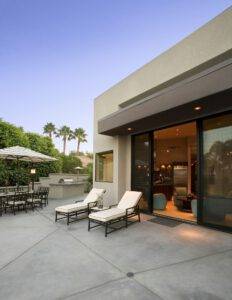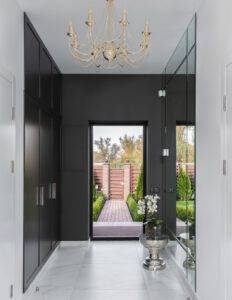Your Dream Floor, Our Expertise
We offer a wide range of flooring services, from simple to complete floor installations and replacements
Request a FREE ESTIMATE
We Will Contact You
Enter your information

5/5
Read BBB Reviews

5/5
Read Nextdoor Reviews

5/5
Read Yelp Reviews
Home Painting services at West Hills
West Hills Painting Solutions by ACD Builders
Due to its unique environment, West Hills has specific painting requirements. The region’s short, arid summers and long, chilly winters demand robust paint solutions that provide both protection and aesthetic appeal. ACD Builders meets this need by offering top-tier painting services in West Hills.
At ACD Builders, we take immense pride in delivering premium painting services at competitive prices. Few painting companies in West Hills can cater to the region’s distinct needs as we do. With us, you’re guaranteed unparalleled quality and dedication.
Choosing the Right Paint
Given West Hills’ distinctive climate, paint choices must withstand both the scorching summer heat and the biting cold of winter. To keep homes looking fresh and vibrant, the paint should offer UV protection and insulation.
Here are some of the paint options we recommend:
Exterior Paints:
- Weatherproof Paints: Known for their durability, these paints are designed to resist the effects of changing weather conditions.
- UV-Resistant Paints: These paints protect your home’s exterior from the harsh rays of the sun, preventing premature fading.
Interior Paints:
- Insulating Paints: These paints offer an added layer of insulation, helping to keep interiors comfortable.
- Low VOC Paints: Environmentally friendly and with minimal odor, these paints are perfect for interior spaces.
Maintaining Your Paint Job
The longevity of your paint job depends on regular maintenance. Our clear and straightforward residential painting service policy includes:
- Cleaning: Regular washing to remove dirt and grime.
- Inspection: Periodic checks for signs of peeling or fading.
- Touch-Ups: Prompt touch-ups or repainting as needed, with the client’s approval.
- Expert Advice: Guiding our clients on best practices and offering solutions for any paint-related issues.
What Sets ACD Builders Apart?
Our mission is to foster trust with our clients, achieved through meticulous planning and consistently high-quality work. With a dedicated team, competitive pricing, and the drive to be West Hills’ premier painting service, our commitment to integrity, honesty, and reliability distinguishes us from the rest.
Why Choose ACD Builders?
Our unwavering dedication, passion for customer satisfaction, and integrity make us stand out. Each project is an opportunity to forge lasting relationships with our clients. We remain available for any queries or concerns, even after the project’s completion. Ensuring your satisfaction is our top priority, and we continually strive to exceed expectations.
Ideal Scope of Work For Painting Project
- Project Overview: Painting specific rooms or exterior areas.
- Site Preparation: Cleaning and priming surfaces, protecting furniture and fixtures.
- Material Selection: Type of paint, brand, color, and finish.
- Application: Applying the chosen paint in the desired pattern or technique.
- Finishing: Applying sealants or protective coatings if required.
- Inspection and Quality Control: Ensuring even coverage and addressing any imperfections.
- Cleanup: Removing all project-related materials and cleaning the painted areas.
- Warranty and Maintenance: Providing warranty details and maintenance guidelines.
- Project Timeline: Start to finish dates, milestones, and checkpoints.
- Payment Terms: Total cost, payment schedule, and terms.
This scope is tailored for a painting project. Specific details may vary based on the project’s unique requirements, the type of paint chosen, and any additional services the client requests. Both the client and the contractor should review and agree upon the scope before work commences.
FAQs
When it comes to painting materials, the term “painting material” typically refers to the type of paint used. The durability of paint can vary based on its formulation, the environment it’s exposed to, and how it’s applied. Here are some of the most durable types of paint:
100% Acrylic Latex Paint:
- This type of paint is known for its long-lasting durability, especially when used for exterior applications.
- It resists fading from sunlight, stands up well to weather conditions, and is less likely to crack or peel over time.
- It’s also resistant to mildew and can be easily cleaned.
Oil-Based Paint:
- Oil-based paints are known for their hard, durable finish.
- They are especially suitable for high-traffic areas and surfaces that require frequent cleaning, such as trim, doors, and cabinets.
- However, they can yellow over time, especially in areas with low light, and they have a longer drying time compared to latex paints.
Epoxy Paint:
- Epoxy paints create a hard, resistant coating that’s especially durable.
- They’re commonly used on concrete floors, garage floors, and other surfaces that require a tough, resistant finish.
- Epoxy paints are resistant to chemicals, abrasion, and impact.
Elastomeric Paint:
- This is a thick, flexible paint that can bridge small gaps and cracks, making it excellent for surfaces with imperfections.
- It’s often used for exterior masonry and stucco surfaces because of its waterproofing qualities and ability to expand and contract with temperature changes.
Urethane and Polyurethane Paint:
- These paints are known for their durable finish and resistance to scratches and impacts.
- They’re often used on surfaces that need a hard, glossy finish, such as floors, furniture, and doors.
Enamel Paint:
- Enamel paints dry to a hard, glossy finish and are known for their durability and ease of cleaning.
- They can be oil-based or water-based and are often used for trim, doors, and high-traffic areas.
When choosing a paint for durability, it’s also essential to consider the paint’s sheen. Generally, the higher the sheen, the more durable the paint. For instance:
- Flat or Matte: Least durable, best for low-traffic areas.
- Eggshell and Satin: Medium durability, suitable for most interior walls.
- Semi-Gloss and Gloss: Most durable, ideal for high-traffic areas, trim, and areas that require frequent cleaning.
Lastly, always prepare the surface properly before painting and follow the manufacturer’s instructions for the best results. Proper surface preparation, priming, and application techniques can significantly enhance the durability of any paint.
Repainting your home, whether it’s the interior or exterior, offers a range of advantages. Here are some of the primary benefits:
Enhanced Aesthetics:
- A fresh coat of paint can significantly improve the look of your home, making it feel newer, cleaner, and more vibrant. It’s an instant facelift for any space.
Increased Property Value:
- A well-executed paint job can boost the resale value of your home. Potential buyers often perceive a freshly painted home as better maintained.
Protection Against Elements:
- For exteriors, paint acts as a protective shield against harsh weather conditions, UV rays, and moisture. It can prevent wood from rotting and metals from rusting.
Improved Indoor Air Quality:
- Using low-VOC or zero-VOC paints can reduce odors and pollutants, leading to healthier indoor air quality.
Hide Stains and Imperfections:
- Paint can cover up stains, marks, and small imperfections on walls, giving a smoother and cleaner appearance.
Positive Mood and Productivity:
- Colors can influence mood and behavior. Refreshing the colors in your living spaces can create a more relaxing environment or invigorate a room, depending on the chosen colors.
Cost-Effective Home Renovation:
- Compared to other home renovation projects, painting is relatively inexpensive and can dramatically change the look and feel of a space.
Protection Against Insects:
- A fresh paint job, especially on the exterior, can help seal tiny holes and cracks, reducing the chances of insects entering the home.
Extend Siding Lifespan:
- Regularly painting the exterior siding, whether it’s wood, vinyl, or another material, can extend its lifespan by providing an added layer of protection against wear and tear.
Reflect Personal Style:
- As your personal style and preferences evolve, repainting allows you to update your home to reflect those changes.
- Regular Maintenance:
- Periodic repainting is a part of regular home maintenance. It helps in early detection of potential problems like mold, mildew, or water damage.
- Enhanced Curb Appeal:
- If you’re repainting the exterior or visible parts of your home, it can enhance its curb appeal, making it more attractive to neighbors and potential buyers.
- Optimal Coverage:
- Over time, walls can get chipped, scratched, or dented. A new paint job provides an opportunity to repair these minor damages and ensure optimal coverage and protection.
When considering repainting, it’s essential to choose high-quality paints and ensure proper preparation of surfaces for the best results. Whether you’re doing it for maintenance, aesthetic reasons, or both, repainting can breathe new life into your home.
Planning a budget for a paint project involves several considerations to ensure you account for all potential costs and stay within your financial limits. Here’s a step-by-step guide to help you plan your budget:
Determine the Scope:
- Decide which areas of your home you want to paint (e.g., exterior, entire interior, specific rooms, trim, doors).
- Measure or estimate the square footage of the areas to be painted.
Research Paint Costs:
- Different types and brands of paint come at varying price points. Visit local paint stores or check online to get an idea of the cost per gallon.
- Remember, high-quality paints might be more expensive initially but can offer better coverage and longer-lasting results.
Estimate Paint Quantity:
- As a general rule, one gallon of paint covers approximately 350 square feet with one coat. However, this can vary based on the paint’s consistency and the surface’s texture and color.
- Factor in whether you’ll need multiple coats, especially if you’re making a significant color change.
Factor in Primer:
- If you’re painting a new surface or a drastically different color, you might need a primer. Estimate the quantity and add it to the budget.
Labor Costs:
- If you’re hiring professionals, get multiple quotes to understand the average labor cost in your area.
- If you’re considering a DIY approach, you might save on labor but consider the time investment and any learning curve.
Supplies and Tools:
- Beyond paint and primer, you’ll need brushes, rollers, painter’s tape, drop cloths, paint trays, and possibly ladders or scaffolding.
- If you don’t already have these tools, factor in their purchase or rental costs.
Preparation Costs:
- The surface might need cleaning, patching, sanding, or other prep work. There might be costs associated with materials or labor for these tasks.
Cleanup and Disposal:
- Consider any costs associated with cleaning up or disposing of old paint, brushes, or other materials.
Additional Features:
- If you’re adding special finishes, textures, or designs, these might come with additional costs.
Contingency Fund:
- It’s wise to set aside an additional 10-15% of your total budget for unexpected costs. This can cover unforeseen challenges or changes you decide to make during the project.
- Review and Adjust:
- Once you’ve listed all potential costs, review your budget. If it exceeds your limit, consider adjusting the scope, paint quality, or DIYing certain tasks to fit within your financial constraints.
- Stay Updated:
- As you proceed with the project, regularly check your expenditures against your budget. This will help you stay on track and make necessary adjustments if costs start to exceed your initial estimates.
By thoroughly researching, planning, and monitoring your budget, you can ensure that your paint project is financially manageable and results in a beautiful transformation of your space.
Painting your home is a multi-step process that requires careful planning and execution. Here’s a step-by-step guide to help you paint your home, whether it’s the interior or exterior:
Planning:
- Decide which areas or rooms you want to paint.
- Choose your paint colors. Consider using paint samples to test colors in small areas before making a final decision.
Gather Materials and Supplies:
- Purchase or gather paint, primer (if needed), brushes, rollers, painter’s tape, drop cloths, paint trays, and other necessary tools.
- For tall walls or ceilings, you may need a ladder or scaffolding.
Prepare the Area:
- Remove furniture or move it to the center of the room and cover it with drop cloths.
- Remove wall hangings, outlet covers, and light switch plates.
- Clean the walls to remove dust, dirt, and grease. For exteriors, consider power washing to clean the surface thoroughly.
- Lay drop cloths on the floor to protect it from paint splatters.
Surface Preparation:
- Fill any holes or cracks with spackling compound or wood filler and sand smooth once dry.
- Sand surfaces that are glossy or peeling to ensure better paint adhesion.
- For exteriors, check for any rotted wood or other damages and repair as necessary.
Taping and Masking:
- Use painter’s tape to mask off trim, windows, door frames, and any other areas you don’t want to paint.
- For exteriors, cover windows, lighting fixtures, and landscaping near the house.
Priming:
- Apply a coat of primer to the walls, especially if you’re painting over a darker color, painting new drywall, or if the wall has stains. This ensures better paint adhesion and a more vibrant final color.
Painting:
- Start with the edges and corners using a brush. This process is called “cutting in.”
- Use a roller for larger wall areas, starting from the top and working your way down.
- Apply paint in a “W” pattern and then fill it in for even coverage.
- Depending on the paint color and the original wall color, you might need a second (or even third) coat. Allow the paint to dry between coats as per the manufacturer’s recommendations.
Painting Trim and Details:
- If you’re also painting the trim, doors, or other details, paint them last. They often require a more careful or different approach, such as using a brush for better control.
Cleanup:
- Remove painter’s tape before the paint is completely dry to avoid peeling.
- Clean brushes, rollers, and paint trays. If you used water-based paint, you could clean with soap and water. For oil-based paints, you’ll need mineral spirits or paint thinner.
- Store leftover paint in a cool, dry place for touch-ups in the future. Make sure to label them with the room and color name.
Reassemble the Room:
- Once the paint is completely dry, move furniture back into place, rehang pictures, and reinstall outlet covers and switch plates.
- Inspect and Touch Up:
- Do a final inspection of all painted areas. Touch up any missed spots or areas where the paint appears too thin.
- Maintenance:
- Clean any marks or stains promptly to keep the paint looking fresh. Use a damp cloth for water-based paints and a cleaning solution for tougher stains.
Remember, safety first! Always ensure proper ventilation when painting indoors, and wear protective gear, such as masks or goggles, if necessary. If you’re painting high areas outside, ensure ladders or scaffolding are stable and used correctly.
Why Us
1. Unmatched Expertise
Craftsmanship and innovation stand as the pillars of our approach, backed by industry knowledge that ensures your dreams are realized brick by brick in West Hills, California.
2. Timely Deliveries
Every project, big or small, is delivered on schedule, meeting the highest standards of quality, thanks to our dedicated team of specialists.
3. Beyond Brick and Mortar
We believe in building lasting relationships grounded in honesty and trust, going beyond just constructing physical structures.
4. Continuous Support
Our commitment to you extends beyond project completion, offering steadfast support for any future needs.
5. Affordable Excellence
Experience premium construction solutions that are budget-friendly, without compromising on quality and craftsmanship.
Discover the ACD Builders Difference
Join hands with a team where your vision takes center stage, shaping a future in West Hills that is crafted to perfection.

100% Client Satisfaction

Professional Work and Team









